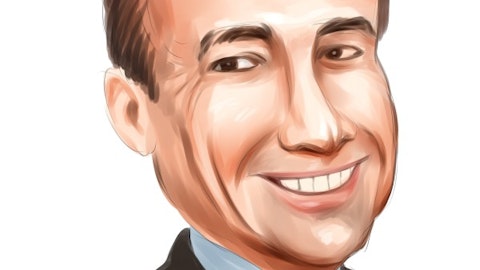Ty Silberhorn: Yes, I think that’s a good summary. Julio, I’ll just add. I mean, this year, there’s a large driver in a significant colder and building expansion within LSO that will put capacity in place that they can go into some of these adjacent markets that we wanted to enter and we started to hint and talk about that in November of 2021. So that was a big driver for the step-up year-over-year. I think we’ve commented this isn’t probably a normalized run rate. But to the same point, if we see a significant opportunity that requires a meaningful investment that we think has great returns and help drive organic growth, we certainly would look at that. And then as Matt said on M&A, we’re active and we have been active. I think our investors would be happy to know that we’re being very disciplined in that approach. We’re being very thoughtful about strategic fit, how it helps diversification and how it’s accretive to our long-term financial goals.
Julio Romero: Really appreciate all the color and detail there. And then you guys talked about seeing or towards the end of your prepared remarks, you mentioned mixed-use buildings. Just talk about are you seeing more orders for mixed-use buildings and talk about the secular growth prospects of that mixed-use category?
Ty Silberhorn: Yes, we’ve seen that increase. And I would say there’s been a few projects that have been won in the last year where projects may — they may have been installed for a couple of quarters in terms of award and some rework went back into those to take it from 100% office to flip it and have maybe 30%, 40%, 50% office and then bring in some residential and retail space as part of that, which got that project to go — gave it the green light from that perspective. So I would say, yes, we’ve seen an uptick in mixed use. We look at that now as part of our backlog analysis. So we’re looking at it in both bid and quote activity. And then certainly, we we’re tracking and looking at that now as a separate category in our award activity in our backlog as well.
So I think that maybe helps two things from an office standpoint. We still continue to see premium office space projects coming forward and being awarded and greenlighted. And then projects that may be on the drawing board were going to be 100% or nearly 100% office, kind of reshaping those to a mixed-use building has allowed those projects to get off the drawing board and get the green light to be executed. So both of those for us are positives and kind of fit into our sweet spot both in terms of what we’re trying to do with our Glass business and the shift to premium and then it fits very well within our Services business for what they target for project types.
Julio Romero: Really helpful. And then if I could just sneak one last one in here is just on the Glass segment. You’re performing very well operationally there. Just how much more runway do you have left with mix improvements in the Glass segment for the rest of the year?
Ty Silberhorn: Well, I would start, as Matt said in his comments, I would look at this quarter as everything went great like everything that could go well in terms of mix, in terms of price, in terms of productivity, in terms of execution. So I would say this quarter is kind of a snapshot of when demand is at the right level, and we’ve got the highest mix, premium mix that we can get into our bookings and revenue, this is what a really great quarter would look like. As he talked to, I wouldn’t put this now as a new benchmark that we don’t expect that to continue at that level and certainly from a margin perspective. We reguided to that 10% to 15% in good demand markets, I think seeing them on an annualized basis, perform at the high end of that range is where we want to be.
We think that allows us to maximize the profit dollars. And so we don’t want to tip over here and all of a sudden get fixated on margin percentage because that business is generating very nice return on invested capital now, it’s generating great income dollar growth, and we want to stay focused on making sure we’re at the right price points, right margin level, right mix that we can grow those profit dollars.
Julio Romero: Great. Thanks for taking the questions, guys.
Ty Silberhorn: Thank you, Julio.
Operator: Thank you. Please standby for our next question. Our next question comes from the line of Jon Braatz with KCCA. Your line is open.
Jonathan Braatz: Good morning, everyone.
Ty Silberhorn: Good morning, Jon.
Jonathan Braatz: Ty, a question, you mentioned that as you look forward, you’re going to be spend some money on organic opportunities. And I guess my question is, are we talking about maybe new products, new geographies? Specifically, what are some of the things that you might be thinking in terms of organic growth opportunities.
Ty Silberhorn: I would look at it — if you look at our non-resi construction business, which is the bulk of our business, I would first think about new geographies. So looking at how can we expand our reach into other parts of North America. So those are areas we’ve looked at in the past. We wanted to make sure that we are at the right margin level and understood where we could best differentiate what’s in the portfolio today. In support of that as well, we are making some capacity investments as well as some productivity investments. Those productivity investments not only help us with growth, but it can help in terms of our service and lead time capabilities, which also is a way for us to differentiate. So we’ve made and are making some capital investments this year that kind of give us a combination of — that will help us on the productivity side, but they’re also going to give us some stronger capabilities from a service level standpoint that we think helps us even take share in the markets that we’re in.





